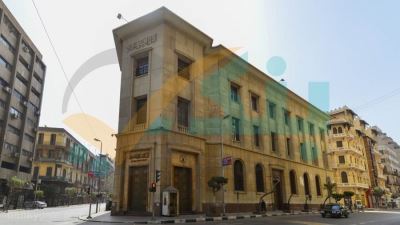Ministry of Planning: Egypt’s GDP Growth Rate Reaches 4.3% in Q2 of Fiscal Year 2024/2025

The Ministry of Planning, Economic Development, and International Cooperation has announced Egypt’s economic performance results for the second quarter of the 2024/2025 fiscal year as part of its periodic economic reports. The country’s Gross Domestic Product (GDP) recorded a growth rate of 4.3%, compared to 2.3% in the same quarter of the previous fiscal year. This growth is attributed to government policies focusing on macroeconomic stability and better governance of public investment spending.

Economic Performance Overview
Minister Rania Al-Mashat emphasized that the continued recovery of GDP growth in the second quarter of the fiscal year reflects the positive impact of corrective financial and monetary policies implemented by the government. She also noted that a reduction in public investments has contributed to macroeconomic stability and an improved business environment. Structural reforms have played a key role in diversifying growth sources and increasing the competitiveness of the Egyptian economy.
The minister highlighted that the private sector is now a key driver of economic growth, as its investments increased by 35.4% during Q2, surpassing public investments for the second consecutive quarter. This reflects the effectiveness of policies aimed at empowering the private sector and encouraging both local and foreign investment.
Despite ongoing global challenges and geopolitical tensions, several key sectors showed strong growth. However, some major sectors, such as the Suez Canal and extractive industries, recorded contractions.
Sectoral Growth Performance
- Manufacturing Sector
The non-oil manufacturing industry achieved a positive growth rate of 17.74%, marking the third consecutive quarter of expansion. This is in contrast to the same period last year when the sector experienced a 11.56% contraction. The increase in industrial production was driven by facilitated customs clearance for raw materials and inputs.
The manufacturing index (excluding crude oil and petroleum products) grew by 17.7% during the second quarter. Key industries contributing to this growth include:
- Automotive industry: 73.4% growth
- Ready-made garments: 61.4% growth
- Beverages industry: 58.9% growth
- Textiles industry: 35.3% growth
2. Tourism Sector
The tourism sector, represented by hotels and restaurants, recorded a growth rate of 18%, supported by a sharp increase in tourist arrivals. The number of tourists rose to 4.41 million in Q2, while the total number of tourist nights increased to 41.92 million.
3. Information and Communications Technology (ICT)
The ICT sector maintained its strong growth trajectory, achieving a 10.4% increase, driven by expansion in digital infrastructure and rising demand for internet services.
4. Other Key Sectors Showing Positive Growth
- Financial intermediation: 11.6%
- Transport and storage: 9.4%
- Construction and building: 4.8%
- Social services (health and education): 4.6%
- Insurance: 4.6%
- Electricity: 3.9%
These figures highlight the diversity of Egypt’s economic growth, in alignment with the government’s vision for structural economic transformation and sustainable development.
Challenges: Declining Sectors
1. Suez Canal
Despite the overall positive economic outlook, the Suez Canal sector contracted by 70% in Q2 due to geopolitical tensions in the Bab el-Mandeb Strait, which negatively impacted maritime traffic. This led to a sharp decline in the number and tonnage of transiting ships.
2. Extractive Industries (Oil & Gas)
The extractive industries sector shrank by 9.2%, with declines in:
- Crude oil production: -7.5%
- Natural gas production: -19.6%
However, the government expects future investments in new oil and gas discoveries to boost production in the coming periods.
Spending and Investment Trends
On the expenditure side, net exports contributed positively to growth for the first time since Q1 of the 2023/2024 fiscal year, adding 1.75 percentage points to overall GDP growth. This was supported by higher exports of goods and services.
- Government spending contributed 0.14 percentage points.
- Investments and inventory changes added 0.11 percentage points, reflecting a shift in economic policy towards governing public investment and promoting private sector-led growth.
Private vs. Public Investment Trends
- Private investment grew by 35.4%, accounting for over 50% of total investments in Q2.
- Public investment contracted by 25.7%, making up less than 40% of total investments.
This shift underscores the Egyptian government’s commitment to enhancing private sector participation and optimizing public investment efficiency.
Future Outlook
The Ministry of Planning remains optimistic about Egypt’s economic prospects, emphasizing that ongoing structural reforms will sustain macroeconomic stability. The government aims to transition towards a more trade-oriented and diversified economy, enhancing its resilience to global challenges.
Moving forward, private sector investments are expected to play a pivotal role in maintaining economic momentum and fostering a favorable business climate for long-term growth.
























